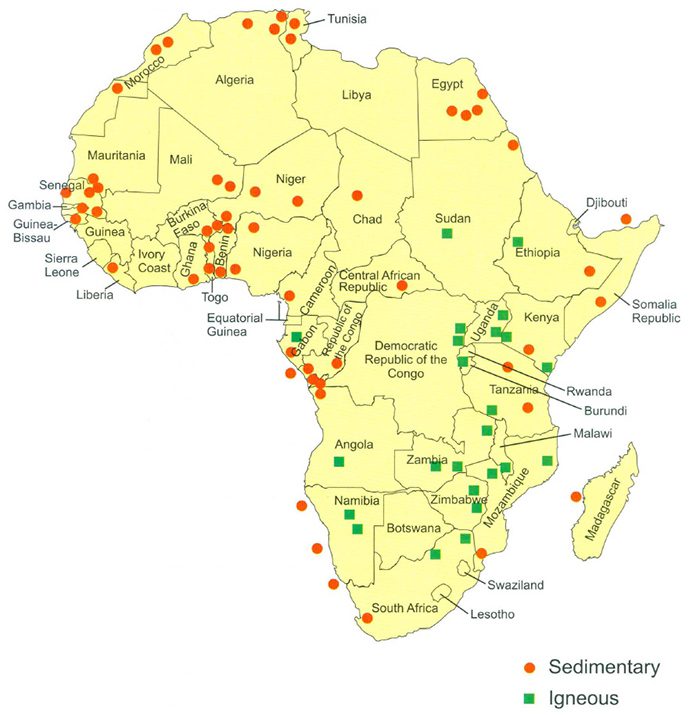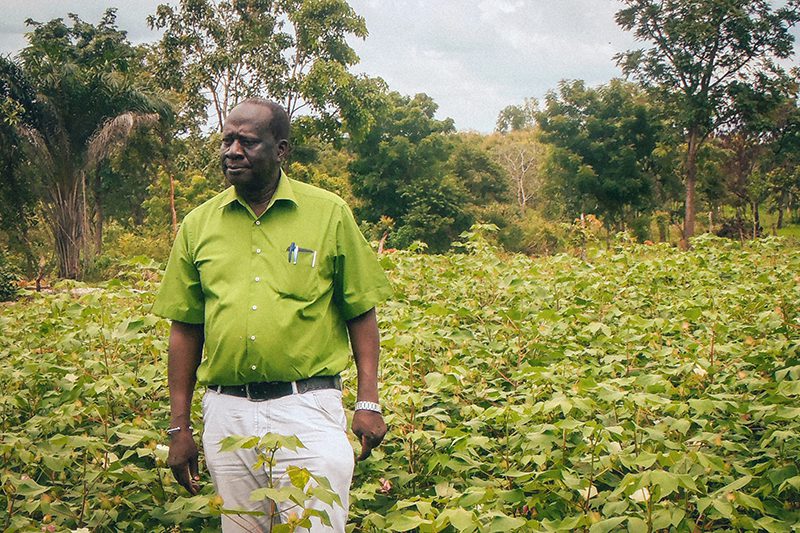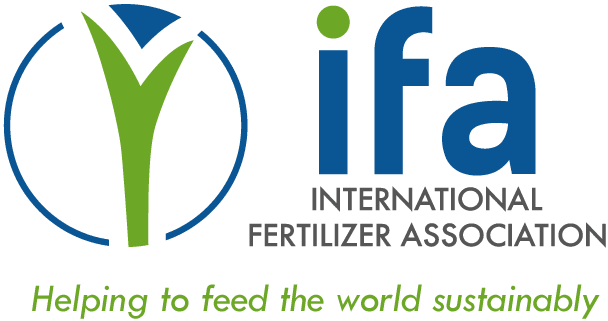Dr. André Bationo on Supporting Smallholders, Micro-Dosing and Warrantage, and Ways to Improve Soil Fertility in Africa
Dr. André Bationo is Chief of Party for the Smallholder Agricultural Productivity Enhancement Program (SAPEP) and winner of the 2020 Africa Food Prize, and 2009 IFA Norman Borlaug Award, for his work on micro-dosing and warrantage in West Africa.
Can you tell us briefly about SAPEP?
The Smallholder Agricultural Productivity Enhancement Program (SAPEP) is designed to provide proven and appropriate technologies to smallholder farmers to increase agricultural productivity, strengthen farmer-extension-research linkages, and facilitate farmers’ access to markets and finance. This will improve living standards for thousands of households. The aim is to rapidly scale up quality staple food production technologies and practices, facilitate policies that will enhance market access, and accelerate technology updates and uptake to increase agricultural productivity, food and nutrition security, and the incomes of smallholder farm households.
In Benin, Burkina Faso, Cameroon, Mali, and Niger this will be achieved through an integrated value chain approach – addressing the production and distribution of farm inputs (seeds and fertilizers) and disseminating appropriate crop production technologies and practices. The program will also strengthen the institutional and technical capacity of stakeholders, including farmer organizations, agricultural research institutions, small and medium enterprises, non-governmental organizations (NGOs), and policymakers. Once implemented, it is expected that were will be an increase to the average yield of staple crops, including cereals, by at least 70% and participating smallholders’ incomes by at least 20%. SAPEP is developed in partnership with the International Fertilizer Development Center (IFDC).
As a fertilizer micro-dosing pioneer in West Africa, can you give us an insight into the impact of the technique and its adoption in the region?
We promote the adoption of micro-dosing and the inventory credit system at the same time. Micro-dosing is a strategic application of small quantities of fertilizers at the target crop at planting rather than broadcasting higher quantities all over the field as previously recommended by extension advisors. This technology ensures efficiency in fertilizer use by the plants and reduces losses through leaching or runoff, reduces the cost and amount of fertilizer use, mitigates the impact of fertilizer in drought prone areas and ensures the productivity of the target crop. Yield increases of between 50 and 200%, higher fertilizer use efficiency and profitability have been reported by researchers and farmers across the Sahelian countries testing this technology.
The warrantage, or inventory credit, system is a social safety net mechanism aimed at tackling the problem of financial liquidity and access to credit by the value chain actors. The system enables producers to access cash loans against the value of their stored farm produce. Farmers can have advance credit, store their grain and sell it when prices improve, thus earning better returns on their investments. This credit can be used to purchase the fertilizer needed for the micro-dose. The micro-dose and warrantage systems have spread from villages in Niger to many other villages and institutions in Niger, Mali, Burkina Faso and Benin making a significant contribution to boosting agricultural production and trade across the Sahel region. To date it is estimated that over 10 million farmers are benefiting from microdosing and warrantage in West Africa.
The success of these innovations has attracted interest and investment from countries in the Sahel region. The World Bank, European Union, the Canadian International Development Agency (CIDA), the International Development A Center (IDRC)-Canada, the United States Agency for International Development (USAID), the Bill and Melinda Gates Foundation, the African Development Bank and the Islamic Development Bank have collectively invested about USD 250 million in the scaling up of micro-dosing combined with warrantage targeting. This has benefited over 10 million farmers in Benin, Burkina Faso, Mali and Niger, including many women farmers, resulting in crop yield increases (up to 120% for sorghum and millet, for example) and higher incomes (by up to 140%) that have improved farmers’ livelihoods.
Can you give us an overview of the current state of soil fertility in Africa?
African soils have inherently poor fertility because they are very old and a lack of volcanic rejuvenation has caused the continent to undergo various cycles of weathering, erosion and leaching, leaving soils poor in nutrients. Inappropriate land use, poor soil fertility management and a lack of inputs have led to a decline in productivity.
During a period of 30 years, soil fertility depletion has been estimated at an average of 660 kg nitrogen (N) ha-1, 75 kg phosphorus (P) ha-1 and 450 kg potassium (K) ha-1 from about 200 million ha of cultivated land in 37 African countries. Africa loses $4 billion per year due to soil nutrient mining. Soil-fertility depletion in smallholder farms is a fundamental biophysical root cause of the declining per capita food production; it has made a large contributing to poverty and food insecurity. Over 132 million tons of N, 15 million tons of P and 90 million tons of K have been lost from cultivated land in 37 African countries in 30 years. Nutrient loss is estimated to be 4.4 million t N, 0.5 million t P and 3 million t K every year from the cultivated land. These rates are higher than Africa’s annual fertilizer consumption (excluding South Africa) of 2.4 million tons N, 0.40 million tons P, and 0.5 million tons K.
The average rate of fertilizer application in SSA (excluding South Africa) in 2020 is less than 20 kg per hectare of NPK fertilizers on croplands compared to the world average of 100 kg NPK ha-1. Despite the recent increase, the consumption of fertilizer per capita is stagnant – five times lower than Asia. As a consequence of the low use of fertilizers and sub-optional soil fertility management, crop yields have stagnated in the past 50 years causing food insecurity and encouraging encroachment upon the continent’s remaining forests to meet the food needs of a growing population. Meanwhile, Africa has considerable fertilizer resources, with 70% of the world’s phosphate rock resources (Figure 1) and significant deposits of nitrogen and potash resources.

Figure 1: Phosphate rock deposits in Africa, Source: IFDC
There is a huge gap between actual and potential crop yields. Table 1 shows the yield of selected crops in farmer’s field without the use of fertilizers as compared to the potential yields obtained with the use of fertilizers. For some crops it is possible to increase the yield by up to five times by improving soil nutrient management with good agronomic practices.

What do you see as some of the most promising techniques to further improve soil fertility, agricultural sustainability and farmers’ economic wellbeing in Africa?
Tailor fertilizer use for climate change mitigation and adaptation
There is a need for more research on the role of fertilizers on Climate Smart Agriculture. Water harvesting technique such as the zai, half-moon and rock bunds can greatly increase the fertilizer use efficiency. Crop intensification with the use of fertilizer will allow the use of less land for food production and therefore prevent carbon dioxide emission in the atmosphere. Numerous studies suggest that managing soil organic matter (SOM) can have a profound impact on the amount of N and carbon released into the atmosphere, and therefore climate change. Fertilizers maintain crop yield and increase biomass that can be incorporated into the soil. Incorporated rates of 1-6 tons of biomass per hectare can gradually increase soil organic matter, sequestering 200-1,000 kilograms of carbon per hectare per year.
Produce regional crop models
Soils and climate are highly variable in Africa calling for the use of crop models. Crop models offer the benefit of increasing our understanding of crop responses to management in different soil and climatic conditions. Such responses are often of a complex and non-linear nature given the innumerable interactions among weather, soil, crop, and management factors throughout the growing season. Crop models can also provide insights in what might happen to productivity under various climate change scenarios, a domain beyond the reach of field experimentation. The outputs can inform key decision makers at local, national, and regional levels in order to put the appropriate measures in place.
Although major advances in modelling have been made in the USA, Europe and Asia, sub-Sahara Africa (SSA) lags behind due to the limited number of soil scientists and agronomists with the skills to set-up and run crop model simulations. Having a well-trained cadre of African modelers would greatly facilitate the design of best crop management and adaptation measures in the varied environments and to boost agricultural productivity in the region. The use of models in decision support is important as field experiments provide empirical data on responses to only a small number of possible combinations of climate, soil, and management situations.
Develop, manufacture and deliver balanced fertilizers to farmers
The SMaRT approach was developed by IFDC and is an acronym for Soil Analysis, Mapping, Recommendations Development, and Technology Transfer. The concept behind SMaRT is to get better fertilizers to farmers for a given crop and region that substantially and sustainably out-perform fertilizers currently used by farmers. Sustainability is addressed by using “balanced” fertilizers, which have a balance of macro, secondary, and micronutrients that address predominant nutrient deficiencies This approach involves:
Soil Sampling, assessing the extent of nutrient and soil acidity constraints through large-scale country-wide geo-referenced soil sampling, followed by chemical soil analysis by certified laboratories; Soil Mapping, understanding nutrient deficiencies at the country level with maps of all soil nutrients create national recognition of the extent of nutrient deficiencies and soil acidity constraints; Recommendations, based on soil maps, “best-bet” crop and soil-specific fertilizers are developed and tested; and Technology Transfer, private sector operatives in the fertilizer value chain sharing fertilizer knowledge, from marketing to technical support.

